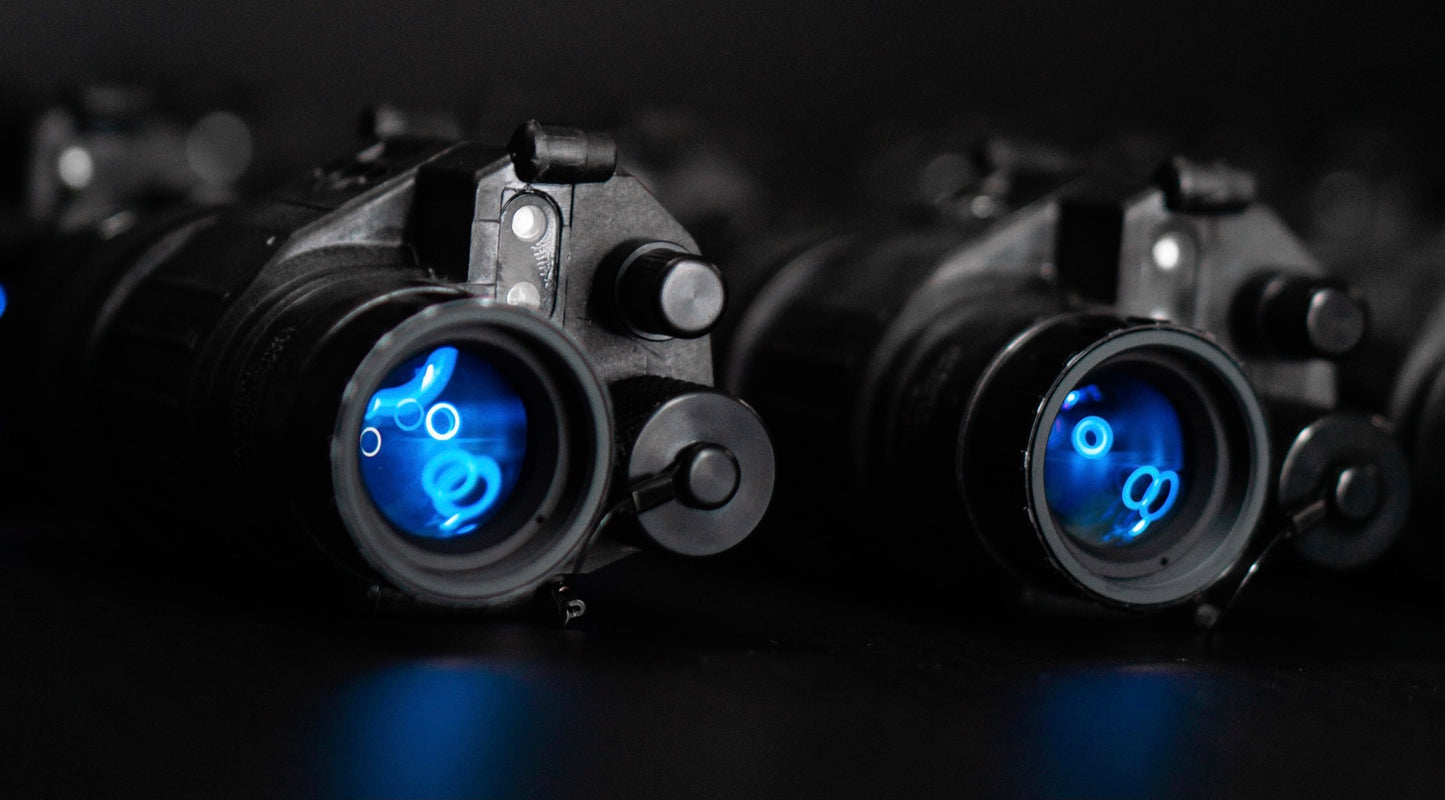
Tube Options:
Photonis Echo:
These tubes are most closely related to Gen 2 by US definition due to the lack of GaAs (gallium arsenide - a semi conductor), though technically they’re a hybrid technology as they utilize a multi-alkali photocathode. Whereas Gen 2 of the "old days" used a bi-alkali. Photonis tubes also feature some of the fastest autogating out there. This lends itself to excellent high light resolution preservation, while also being resilient to exposure. Photonis can utilize more of the light spectrum than Gen 3 offerings. That being said, Gen 3 tubes will perform better in absolute low light. Echo are a great choice for the more budget minded user and will offer great performance for their cost.
Elbit:
Elbit offers a variety of Gen 3 tube types, all of which are filmed. This means there is an aluminum oxide film utilized in the internal "layering" of the tube construction, to put it into simple terms. This technology was developed to extend tube life. Contrary to misinformation you may encounter, filmed vs unfilmed both exhibit the same projected lifespan. While filmed technology was developed to extend tube life, both thin-filmed and unfilmed intensifiers have the same prescribed lifespan.
L3Harris:
While L3H does manufacture thin-filmed tubes, we only offer their products in unfilmed variety. Unfilmed tubes, in comparison to thin-filmed and Photonis Echo, will perform the best in absolute low light - on an all equal spec basis. This technology is a little newer than filmed technology. Again, there is no loss in tube life in an unfilmed system. You may hear these referred to as Filmless as well
Cosmetics & Tube Grade:
You may see the word "blem" used when researching Night Vision. Blems are user induced burns, shades, streaks, splotches, etc. Blems are an external happenstance to the tube. Dark spots are what are present when a tube is created. Dark spots are normal in all tubes. Even in the most high-end offerings out there. A completely clean tube is the abnormal. This isn't to say it isn't possible to have a completely clean tube. Just extraordinarily rare.
This leads into dark spot allowance. For a spot to be considered a spot it must be larger than .003”. Anything under this isn't counted and is allowed in any quantity in any zone. Often referred to as "peppering." All tubes start with the goal of being perfect. Tubes that don't meet a designated spec and cosmetic requirement become fall-out tubes and are either graded as a designation lower, if they meet that requirement, or become commercial tubes if they don't. In short, all commercial tubes are Mil-Spec fall-outs.
What constitutes a fall-out may be something as simple as one spot not allowed in a specific zone or a spec parameter that is out of acceptable range. Perhaps too low or too high depending on the metric. Example, photocathode sensitivity too low, SNR too low, EBI too high, Halo too high, etc. In terms of cosmetics, a commercial tube may exhibit more spots or a larger spot than what would be acceptable in a Mil-Spec tube. They can also exhibit a faint streak or shade etc. Just because a tube didn't meet Mil-Spec requirements doesn't mean it's bad. Often some of the best "bang for you buck" tubes are commercial.
Spot Specification:
Now let’s dive into UM/UA. “U” simply means there isn’t a fom restriction, or unlimited fom. “A & M”; These are spot spec requirements for tube designations. M can be summarized as a Mil-Spec spot spec criteria for ground tubes. No zone 1 spots larger than .003 may be present. Up to 1 spot .006-.009, 2 spots .003-.006 may be in zone 2 and 3. With a max allowable 4 spots per tube.
A is an Aviator spot spec requirement and uses this same standard but doesn't permit any spots in zone 2 larger than .003. Once again, spots less than .003 are not counted.
You can think of zones similar to a bullseye. Zone 1 is the center most ring. Zone 2 the ring beyond zone 1. Zone 3 being the outer most ring. Dark spots in general tend to blend into the environment when you use your device. Especially those in the outer zones.
The image below illustrates a factory dark spot as well as zone location:

Minimum Specifications:
Each type of intensifier features it’s own respective minimum requirement for tube data metrics/specifications. This can be helpful in a generalized sense. However, it’s important to understand tubes regularly exceed their minimum requirements to a strong degree. As an example a 20UM/UA intensifier must meet or exceed 1792 figure of merit. This is known as FOM and is a metric derived from the signal to noise ratio (SNR) multiplied by center resolution. Deeper into this, the minimum center resolution for a 20UM/UA is 64 lp/mm with a 28 signal to noise ratio. These are entirely respectable numbers in their own right. It wasn’t more than a few years ago that a 28 SNR was considered absolutely stellar. That being said, it’s common for tubes of all types to exceed their minimums. It’s a regular occurrence to see much higher numbers not only in 20UM/UA, but every other tube type as well. Including Photonis Echo, Elbit tube varieties, and L3Harris. There isn’t a secret recipe for tube specifications. It helps to have favorable specs, especially in relation to certain metrics; but with modern tube technologies they all yield entirely usable and capable performance. If you have a specification goal in mind for your device please contact us and we would be happy to deliver on your goal.
So what should you buy?
If cared for properly, Night Vision can last a lifetime. Invest in yourself and your capabilities. Establish a realistic budget for what you need and want. Factor in your helmet and mounting solution as well as preferred laser device, though that can come later if need be. Tubes are ultimately what allow you to see at night; select the best tubes you're able to within your budget. Housing, while not quite as important as tube type, can be tied for this position. Decide what features you want out of your housing. Articulation, battery pack capability, on-board illuminator, etc.
